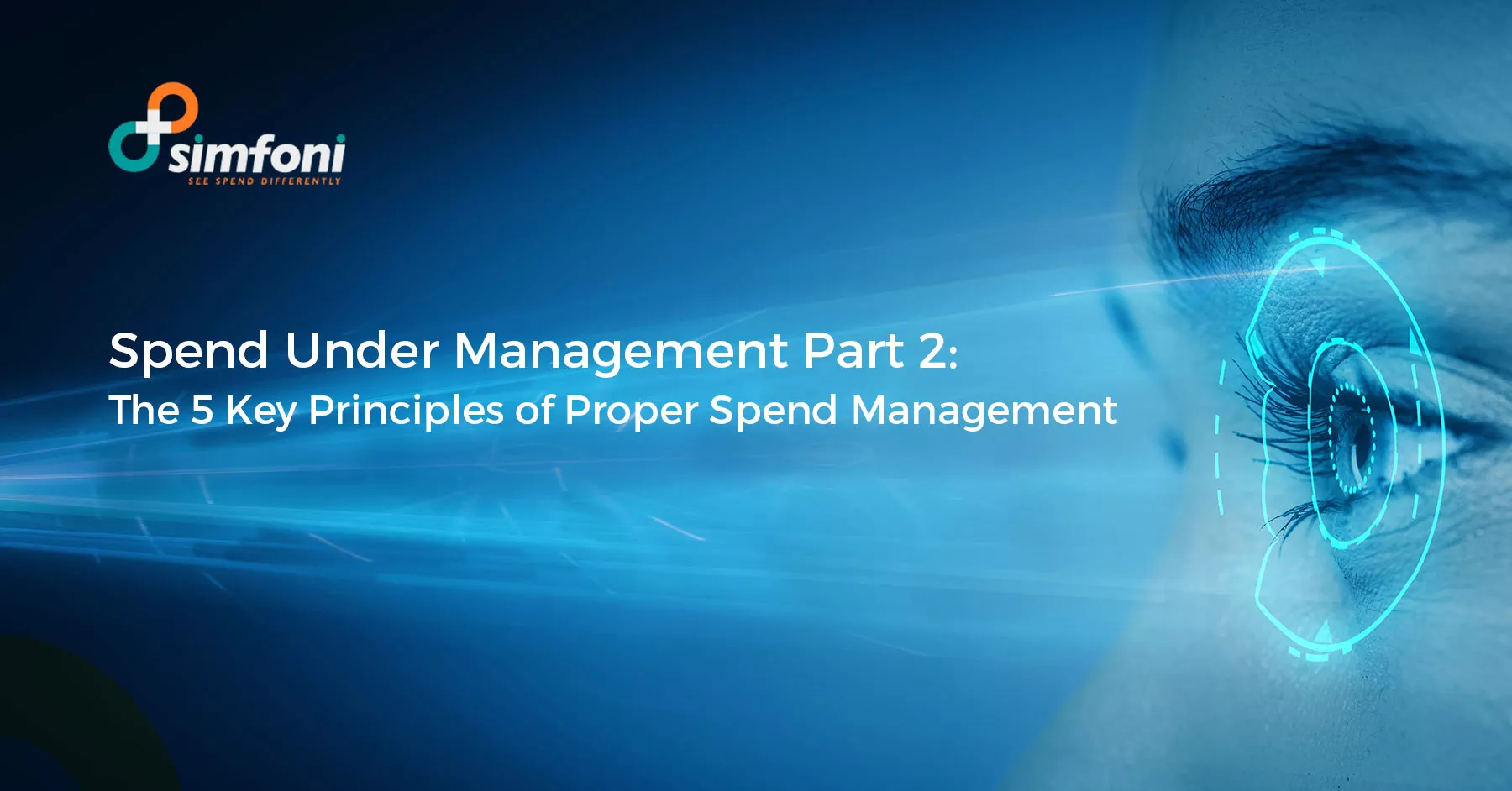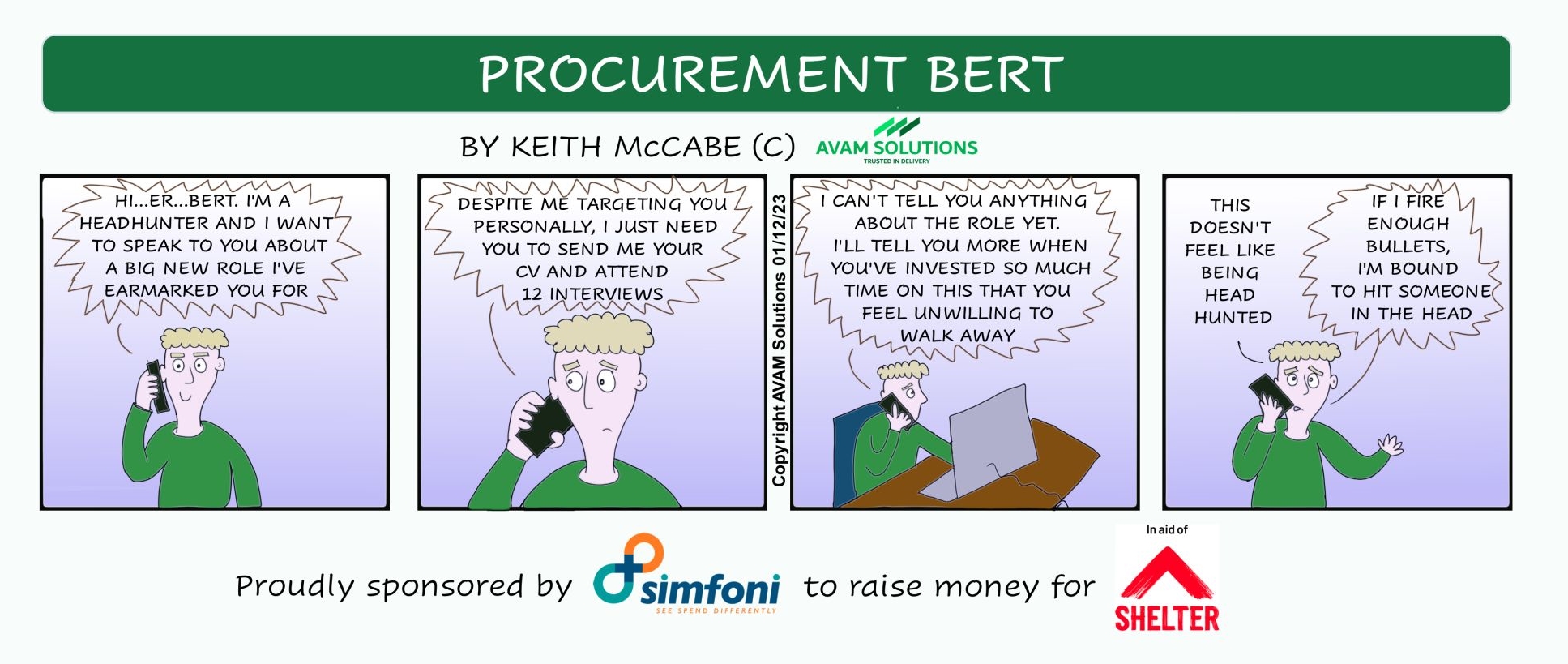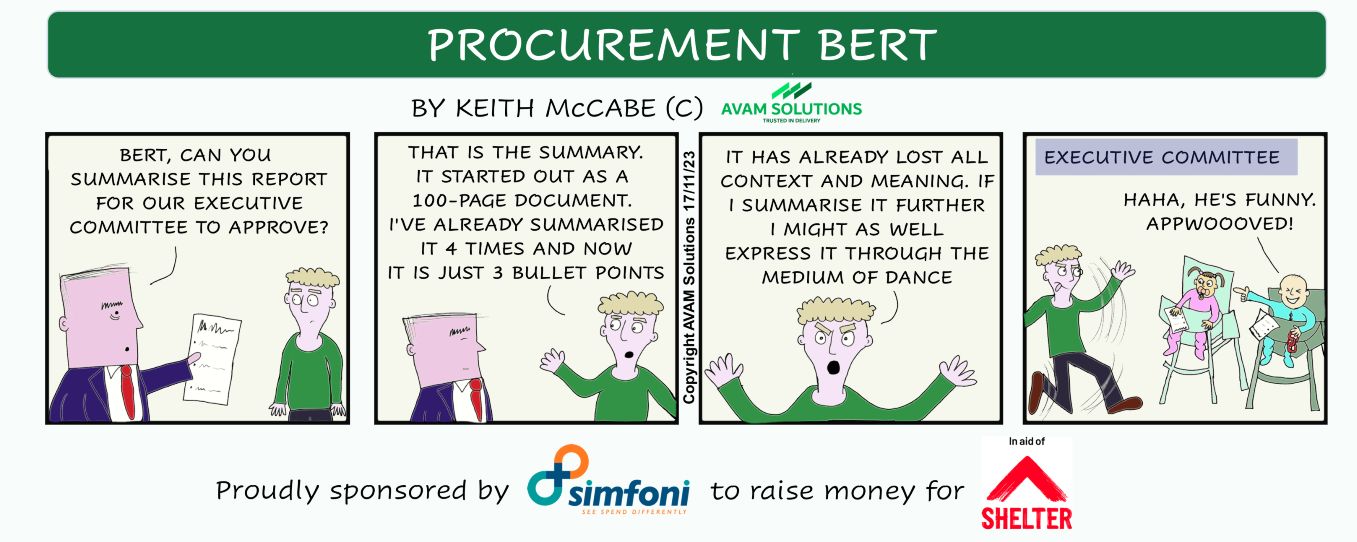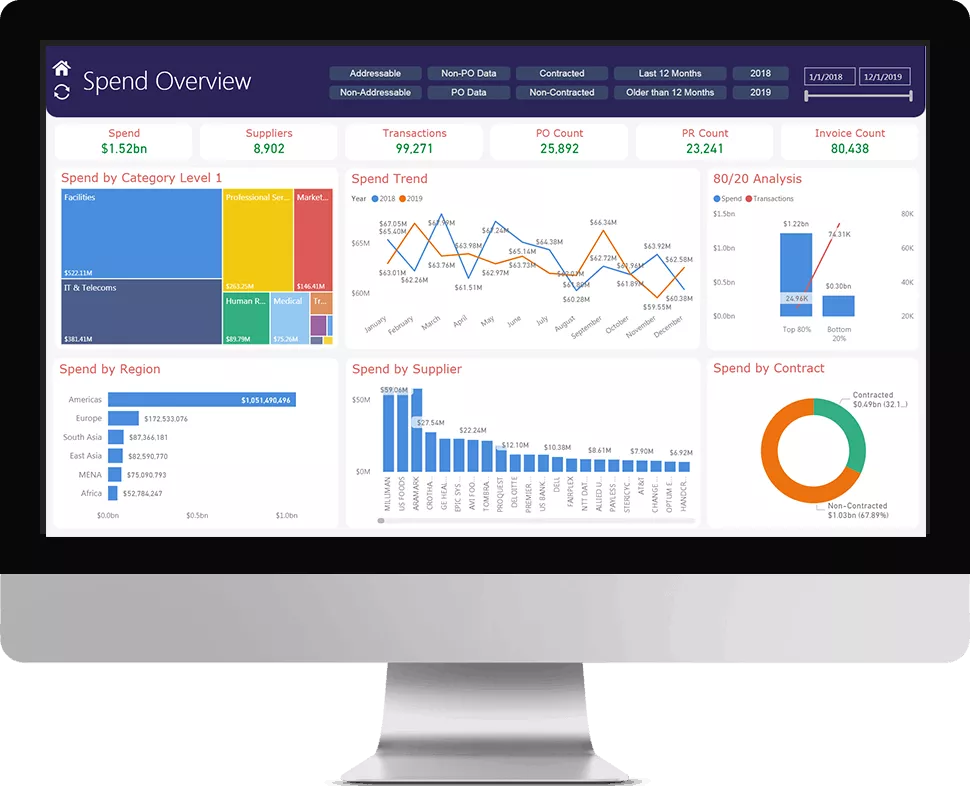In our last post, we discussed adopting spend under management (SUM) and the first of the five principles:
- Spend Under Management Part One: Connecting Procurement to Your Core Business
- Spend Under Management Part Two: The 5 Key Principles of Proper Spend Management
1) Channel spend through intelligent procurement technology.
The first of the SUM principles suggests using technology to improve transparency and drive efficiencies across the organization through automation, but also by enabling tighter control of process and policy, and the capture and interpretation of critical spend data. We covered this principle in our previous blog post. If you haven’t read Part One of our ‘Spend Under Management Series’, you can read it here.
Here are the remaining four principles of the SUM framework:
2) Purchase through a formalized requisition process.
In reality, an organization should be targeting to flow 100 percent of spend through a controlled process. These purchasing processes should be governed by policies and procedures that are complete and universally enforced. Simply having them in place is a starting point but the key issue is ensuring they are adhered to, with all spend areas incorporated and reinforced through workflows and business practices. To achieve this you’ll need a procurement platform intelligent enough to accommodate the differences in requirements by category and/or region. With this in place, you’ll be able to enable secure data access, simplify and streamline the decision-making process, and ensure that forecasting and decision-making is based on best practices and informed by data through spend analysis, not intuition.
3) Source in a competitive environment.
Sourcing in a competitive environment is beneficial to your business because you’re more than likely to get the best value for your dollar, with competition among suppliers leading to improved efficiency and reduced costs. This is easy to understand but for a myriad of reasons is not always practiced. Using quick quotes in a procurement tool, web-enabled RFPs, and auctions are a start, but how you maximize the business value of sourcing varies significantly based on category, region, and end customer needs. eSourcing solutions are emerging as a fixture in the procurement sector, with a growing number of companies utilizing these tools to drive cost efficiency and provide the right level of visibility into their procurement spend. With the right solution, you’ll be able to better understand your complex purchase mix, expose additional discounts and competitive deals, and automate your sourcing activities to optimize outcomes.
Read More:- Guide to Procurement Management
4) Ensure contracts are in place and used across all spend.
Well-structured and managed contracts are essential to gaining efficiency, reducing risk, and managing effective partnerships with suppliers. In almost any category, 70-90 percent of spend should flow through contracts or pre-negotiated catalogs. This is where specialized talent in indirect procurement can add value to functional areas and the goods or services they request. However, your procurement team may not have the skill base or knowledge to proactively manage these contracts—i.e., make sure supplier commitments are met, identify best practices, and bring key market insights to the organization. In addition, you need to ensure your current systems and processes enable efficient transactions against your supplier contracts. For example, there could be leakage or maverick spending that is bypassing defined processes. That’s where, again, your procurement specialists can make an impact, but not every organization has the resources to dedicate such expertise. A contract management platform can enable more efficient acquisition by providing visibility into agreements, project milestones, and performance metrics that can be used to create dynamic agreements based on real-time data.
5) Provide closed-loop metrics and management.
A closed-loop performance measurement and management system is a key success factor in achieving maximum sourcing strategy acceptance and savings capture. By ‘closed-loop‘, we mean a system with the ability to take action on the monitored performance and combine the results with strategic goals to drive business value and impact. By utilizing robust spend analytics tools that allow you to view information at any level of granularity, cost savings targets can be explicitly linked to the financial objectives of the business, and ultimately impact those core business metrics like TCO, operating profit, working capital and cash flow. For example, your business may be looking to capture a 5-percent average savings target within one of its key spend categories. This could mean several changes in the contract terms or the need to decide on a vendor contract renewal at the expense of other contracts. Or, your business may wish to stay within a certain supplier budget and only extend to a third-party contract when a supplier’s price is substantially lower than the cost of the new third-party supplier. Closed-loop procurement models are designed to give you easy access to the information you need to know to achieve the desired outcomes.
Read More:- Comprehensive Guide to Supplier Diversity in Procurement & Supply Chain
Companies with multiple sources of spend that want to realize their maximum savings potential will benefit from a closed-loop procurement solution that uses spend analytics in tandem with eSourcing capabilities. These are two critical core components of the procurement function and when used together, you can easily discover where your best savings opportunities lie, and then strategically source them.
More to come on the benefits of combining Spend Analytics with eSourcing capabilities in Part Three of our series, but in the meantime download our free Spend Analytics and eSourcing handbooks to learn more about the benefits these powerful tools can bring to your organization.
Download the Spend Analytics and eSourcing handbooks today!












